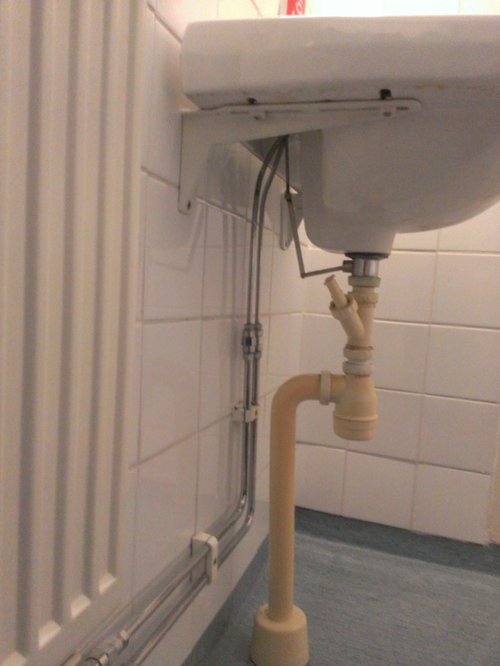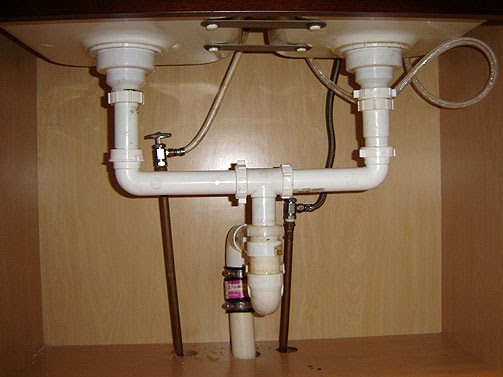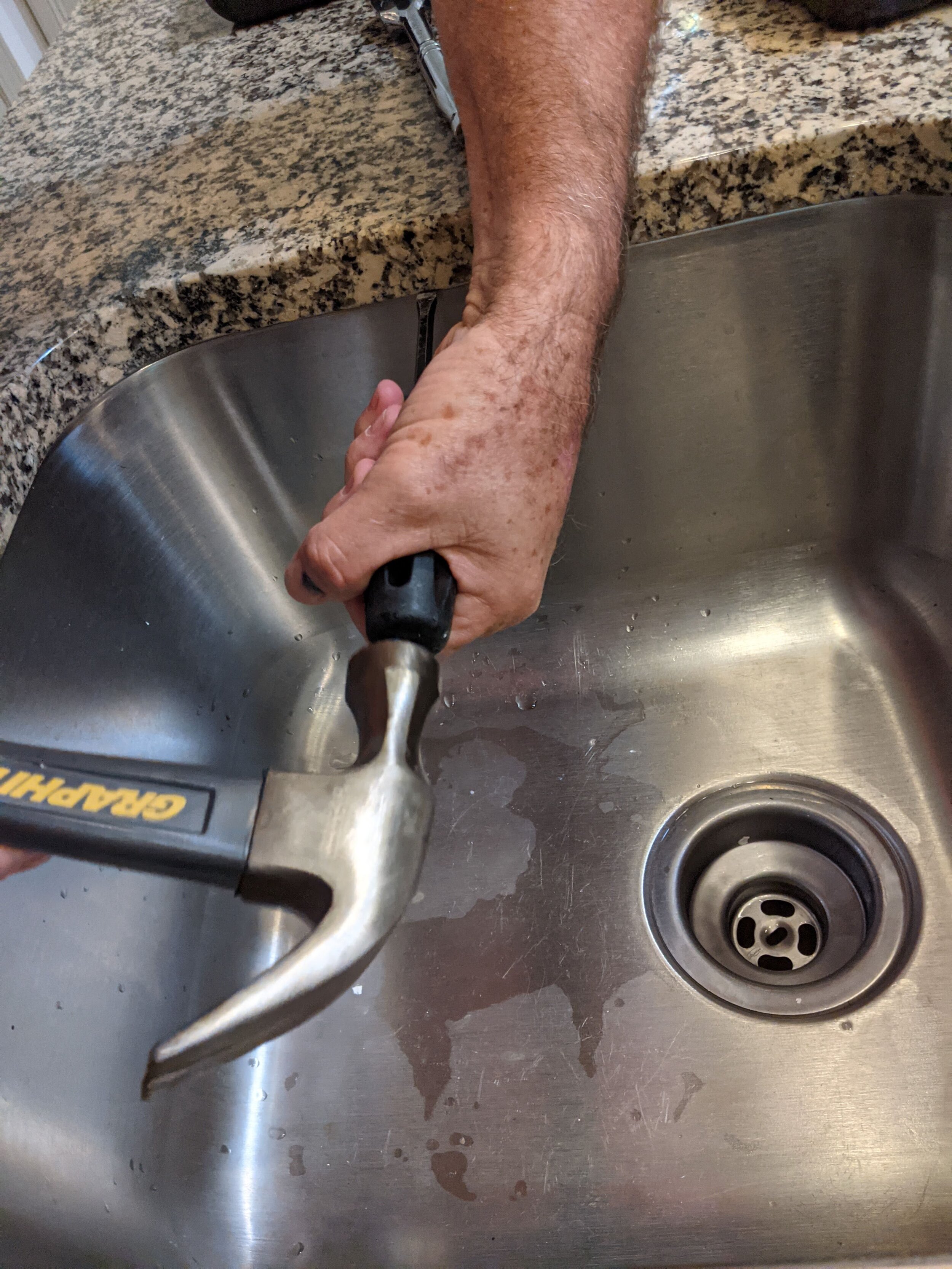Replacing a kitchen sink drain pipe may seem like a daunting task, but with the right tools and knowledge, it can be a simple DIY project. Whether you are dealing with a leaky pipe or simply want to upgrade your sink, replacing the drain pipe is a necessary step. In this guide, we will take you through the process of replacing a kitchen sink drain pipe in easy-to-follow steps. How to Replace a Kitchen Sink Drain Pipe
Step 1: Gather your tools and materials. To replace a kitchen sink drain pipe, you will need a few basic tools such as a pipe wrench, pliers, and a screwdriver. You will also need a replacement drain pipe, plumber's putty, and silicone sealant. Step 2: Turn off the water supply. Before you begin, make sure to turn off the water supply to your sink. This will prevent any water from leaking out while you work on the drain pipe. Step 3: Remove the old drain pipe. Use your pliers or pipe wrench to loosen and remove the nuts and bolts that hold the old drain pipe in place. You may need to use some force, but be careful not to damage the sink or surrounding fixtures. Step 4: Clean the area. Once the old drain pipe is removed, clean any remaining debris or old putty from the sink and drain hole. This will ensure a clean and secure fit for the new drain pipe. Step 5: Prepare the new drain pipe. Apply a thin layer of plumber's putty around the edge of the drain hole on the bottom of the sink. This will create a watertight seal between the sink and the new drain pipe. Step 6: Install the new drain pipe. Carefully place the new drain pipe into the sink's drain hole, making sure it fits securely. Then, secure it in place using the nuts and bolts provided. You may need to use your pliers or pipe wrench to tighten the bolts properly. Step 7: Check for leaks. Once the new drain pipe is installed, turn the water supply back on and run water through the sink to check for any leaks. If you notice any leaks, tighten the bolts or add more putty as needed. Step 8: Apply silicone sealant. To ensure a watertight seal, apply a small amount of silicone sealant around the edge of the drain pipe where it meets the sink. This will prevent any water from leaking out and causing damage.Replacing a Kitchen Sink Drain Pipe: A Step-by-Step Guide
Replacing a kitchen sink drain pipe is a task that can easily be done yourself, saving you time and money. By following these simple steps and using the right tools and materials, you can replace a kitchen sink drain pipe like a pro.DIY: Replacing a Kitchen Sink Drain Pipe
When replacing a kitchen sink drain pipe, there are a few tips and tricks that can make the process even easier. Here are some things to keep in mind: - Before installing the new drain pipe, make sure it is the correct size and shape for your sink. You may need to measure the old drain pipe or consult the manufacturer's instructions. - If you are having trouble removing the old drain pipe, try using a lubricant such as WD-40 to loosen the bolts and nuts. - Don't forget to turn off the water supply before starting the project to avoid any accidents.Replacing a Kitchen Sink Drain Pipe: Tips and Tricks
With this guide, you now have all the information you need to successfully replace a kitchen sink drain pipe. By following these steps and tips, you can upgrade your sink and ensure it is functioning properly in no time.The Ultimate Guide to Replacing a Kitchen Sink Drain Pipe
Although replacing a kitchen sink drain pipe is a relatively simple task, there are some common mistakes that people make. Avoid these mistakes to ensure a smooth and successful project: - Forgetting to turn off the water supply before removing the old drain pipe. - Not cleaning the area properly before installing the new drain pipe, resulting in a poor seal. - Using too much or too little plumber's putty or silicone sealant.Replacing a Kitchen Sink Drain Pipe: Common Mistakes to Avoid
If you are a visual learner, you may find it helpful to follow a step-by-step tutorial for replacing a kitchen sink drain pipe. There are many online resources and videos available that can guide you through the process in more detail.Step-by-Step Tutorial for Replacing a Kitchen Sink Drain Pipe
To make sure you have everything you need for the project, here is a list of the tools and materials required for replacing a kitchen sink drain pipe: - Pipe wrench - Pliers - Screwdriver - Replacement drain pipe - Plumber's putty - Silicone sealantReplacing a Kitchen Sink Drain Pipe: Tools and Materials You'll Need
If you are still unsure about replacing a kitchen sink drain pipe, here are some expert tips that can help: - If you have an older sink or drain pipe, it may be a good idea to replace the entire assembly rather than just the drain pipe. This will ensure that all parts are functioning properly and will save you from having to replace the drain pipe again in the near future. - If you are not confident in your DIY skills, it is always best to consult a professional plumber. They have the knowledge and experience to handle any potential issues and can ensure the job is done correctly.Expert Tips for Replacing a Kitchen Sink Drain Pipe
If you encounter any issues while replacing a kitchen sink drain pipe, here are some common problems and their solutions: - Leaks: If you notice leaks after installing the new drain pipe, make sure all bolts and nuts are tightened properly. If the leak persists, apply more putty or sealant as needed. - Difficulty removing the old drain pipe: If the old drain pipe is stuck, try using a lubricant or calling a professional for help. - Incorrectly sized drain pipe: If the new drain pipe does not fit properly, double-check the measurements and consult the manufacturer's instructions.Replacing a Kitchen Sink Drain Pipe: Troubleshooting Common Issues
Why Replacing a Kitchen Sink Drain Pipe is Essential for a Functional and Beautiful Kitchen

The Importance of a Kitchen Sink Drain Pipe
 When it comes to the design and functionality of a kitchen, the sink plays a crucial role. It is where we wash our dishes, prepare food, and sometimes even wash our hands. But often, the importance of the
kitchen sink drain pipe
is overlooked. This small yet vital component of the sink is responsible for carrying away dirty water and preventing clogs and leaks. Without a properly functioning drain pipe, your kitchen sink can become a nightmare to use and can even cause damage to your cabinets and floors. Therefore, if you want a fully functional and beautiful kitchen, replacing your kitchen sink drain pipe should be at the top of your list.
When it comes to the design and functionality of a kitchen, the sink plays a crucial role. It is where we wash our dishes, prepare food, and sometimes even wash our hands. But often, the importance of the
kitchen sink drain pipe
is overlooked. This small yet vital component of the sink is responsible for carrying away dirty water and preventing clogs and leaks. Without a properly functioning drain pipe, your kitchen sink can become a nightmare to use and can even cause damage to your cabinets and floors. Therefore, if you want a fully functional and beautiful kitchen, replacing your kitchen sink drain pipe should be at the top of your list.
Signs That It's Time to Replace Your Kitchen Sink Drain Pipe
 Over time, the drain pipe in your kitchen sink can become worn out and deteriorate, leading to problems such as slow drainage, foul odors, and even leaks. If you notice any of these issues, it may be time to replace your drain pipe. Additionally, if you are doing a kitchen remodel or upgrading your sink, it is a good idea to replace the drain pipe as well. This will ensure that all the components of your sink are in top condition and will function properly.
Over time, the drain pipe in your kitchen sink can become worn out and deteriorate, leading to problems such as slow drainage, foul odors, and even leaks. If you notice any of these issues, it may be time to replace your drain pipe. Additionally, if you are doing a kitchen remodel or upgrading your sink, it is a good idea to replace the drain pipe as well. This will ensure that all the components of your sink are in top condition and will function properly.
How to Replace Your Kitchen Sink Drain Pipe
 Replacing a kitchen sink drain pipe may seem like a daunting task, but with the right tools and steps, it can be a simple and straightforward process. First, gather all the necessary tools, including a pipe wrench, pliers, plumber's putty, and a new drain pipe. Then, turn off the water supply to your sink and remove the old drain pipe by unscrewing it from the bottom of the sink and the wall. Next, apply plumber's putty around the edges of the new drain pipe and insert it into the drain hole in the sink. Secure it in place with the nut underneath the sink and connect the other end to the wall pipe. Finally, turn the water supply back on and test the new drain pipe for any leaks or issues.
Replacing a kitchen sink drain pipe may seem like a daunting task, but with the right tools and steps, it can be a simple and straightforward process. First, gather all the necessary tools, including a pipe wrench, pliers, plumber's putty, and a new drain pipe. Then, turn off the water supply to your sink and remove the old drain pipe by unscrewing it from the bottom of the sink and the wall. Next, apply plumber's putty around the edges of the new drain pipe and insert it into the drain hole in the sink. Secure it in place with the nut underneath the sink and connect the other end to the wall pipe. Finally, turn the water supply back on and test the new drain pipe for any leaks or issues.
Professional Help for Replacing a Kitchen Sink Drain Pipe
 While replacing a kitchen sink drain pipe may seem like a DIY task, it is always advisable to seek professional help if you are not confident in your plumbing skills. A professional plumber will have the necessary expertise and tools to ensure that the new drain pipe is installed correctly and without any issues. This will save you time, money, and potential headaches in the long run.
In conclusion, a
kitchen sink drain pipe
may be a small component, but it plays a significant role in the functionality and overall design of your kitchen. By replacing it when necessary and ensuring it is in top condition, you can have a fully functional and beautiful kitchen that will make your daily tasks easier and more enjoyable. So don't overlook the importance of your kitchen sink drain pipe and make sure to replace it when needed.
While replacing a kitchen sink drain pipe may seem like a DIY task, it is always advisable to seek professional help if you are not confident in your plumbing skills. A professional plumber will have the necessary expertise and tools to ensure that the new drain pipe is installed correctly and without any issues. This will save you time, money, and potential headaches in the long run.
In conclusion, a
kitchen sink drain pipe
may be a small component, but it plays a significant role in the functionality and overall design of your kitchen. By replacing it when necessary and ensuring it is in top condition, you can have a fully functional and beautiful kitchen that will make your daily tasks easier and more enjoyable. So don't overlook the importance of your kitchen sink drain pipe and make sure to replace it when needed.




/how-to-install-a-sink-drain-2718789-hero-b5b99f72b5a24bb2ae8364e60539cece.jpg)



























:max_bytes(150000):strip_icc()/how-to-install-a-sink-drain-2718789-hero-24e898006ed94c9593a2a268b57989a3.jpg)





/how-to-install-a-sink-drain-2718789-hero-24e898006ed94c9593a2a268b57989a3.jpg)








